-
Place of Birth
Crothersville, Indiana, US
-
Place of Death
Indianapolis, Indiana, US
-
Burial Place
Floral Park Cemetery, Indianapolis, Indiana, US
Early Years (1899–1909)
George Thomas Applegate entered the world on 26 August 1899 in Crothersville, Jackson County, Indiana. He was the son of George W. Applegate, a drayman by trade, and Serilda (White) Applegate.
By the summer of 1900, the family home was bustling. Alongside his parents, George shared the house with older siblings John, Elsie, and Edna, as well as his aunt Cora White. That year’s census even captured visiting family friends from Tennessee, adding to the lively household scene. At just nine months old, George’s world was a full and busy one.

Growing Up in a Changing Household (1910)
The 1910 census records show that life had shifted. George’s parents had separated, and Serilda remarried Henry Toppe. George, now 10, was growing up with his sisters Elsie and Edna, and younger brother Charles. The family remained rooted in Indiana, but the household dynamic had changed from those early days in Crothersville.

Young Adulthood & First Jobs (1918–1922)
At age 19, George registered for the World War I draft in Indianapolis on 12 September 1918. He was living with his mother at 806 Woodlawn Avenue, working as a laborer in manufacturing. The draft card described him as medium height, slender, with blue eyes and light hair.
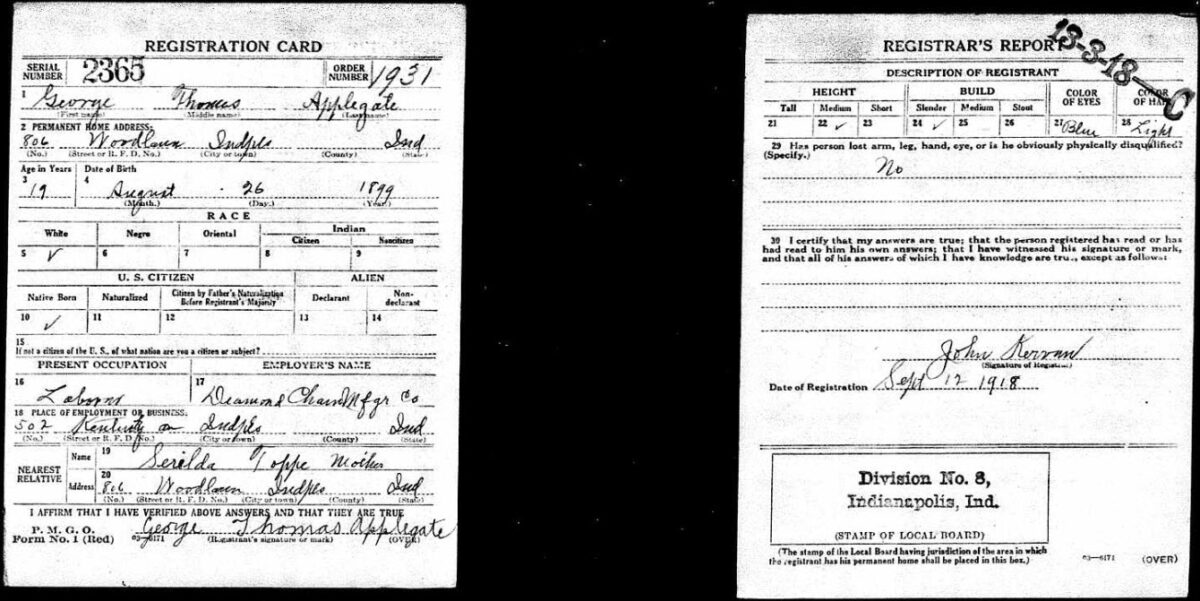
By 1920, he was employed as a machinist at Dee’s Tools. City directories in 1922 list him still at the Woodlawn address, working steadily as a laborer.

City directories in 1922 list him still at the Woodlawn address, working steadily as a laborer.
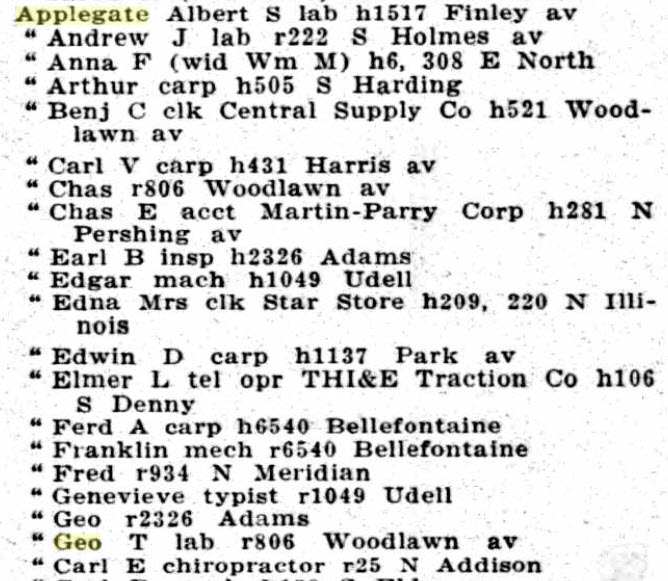
Factory Work & Family Ties (1930–1940)
In 1930, George, now 30, was living on Brookside Avenue with his mother—by then married to John F. Walsh. George was single, employed in factory work, and supporting the household.

The 1940 census paints a picture of a man who had weathered life’s turns. Divorced, 40 years old, and boarding on North Alabama Street, George was still working as a machinist, earning $1,250 the previous year. His education had ended in elementary school, but his steady employment kept him afloat.

Service on the Home Front (1942)
During World War II, George once again registered for the draft. In 1942, at age 42, he was working for Allison’s Engineering in Speedway City. He stood 5’5” tall, weighed 120 pounds, and had brown hair with the same blue eyes recorded in 1918. His next of kin was Florence Gish.
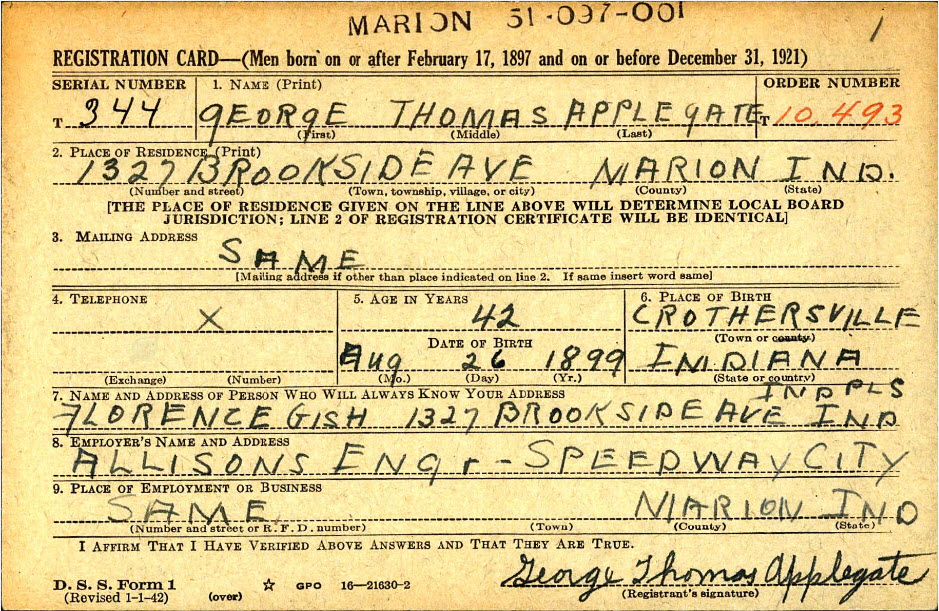
Later Marriages & Work at Allison (1963–1971)
George married Flora Cecile Schnoth on 2 November 1963. He was 64 years old, working as a material checker, and living on West 30th Street in Indianapolis. Flora, a housekeeper, had been widowed twice before.
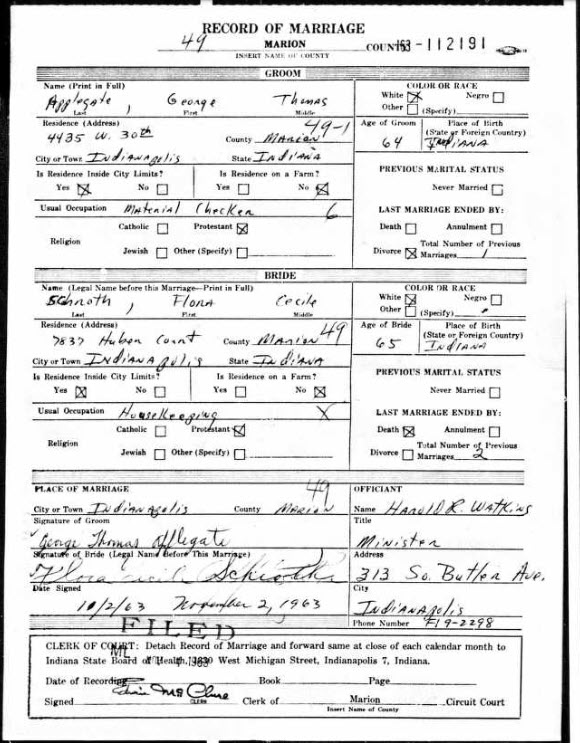
After Flora’s passing, George remarried on 5 May 1971 to Laura Myrtle Vickery. Both were 71 and retired. George had by then experienced three previous marriages, while Laura had two.
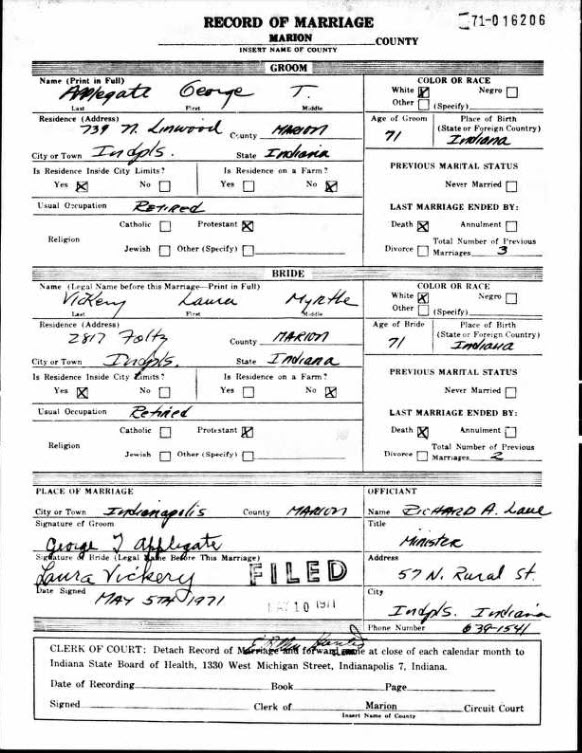
Final Years & Legacy (1990)
George spent his career largely with Allison, working as a material handler for 24 years before retiring in 1957. He was a member of the Third Christian Church and lived his final years with his stepson, Jack Vickery.
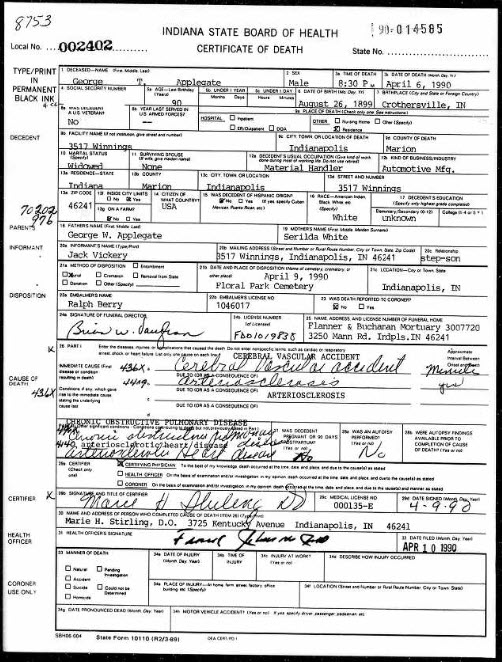
On 6 April 1990, at the age of 90, George passed away at home in Indianapolis after a stroke. He had endured chronic heart and lung conditions in his later years. His obituary remembered his long service at Allison and his dedication to family.
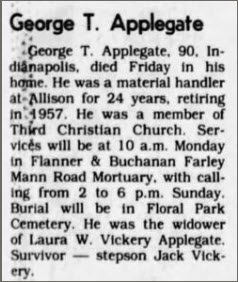
George was laid to rest on 9 April 1990 at Floral Park Cemetery in Indianapolis, where he remains today.

If you knew George Thomas Applegate — whether from the factory floor, the neighborhood, or Sunday services — we’d love to hear your stories. Visit his Introduction Page to share your memories and help preserve the details only friends and family can tell.
Stay tuned,
~Kris
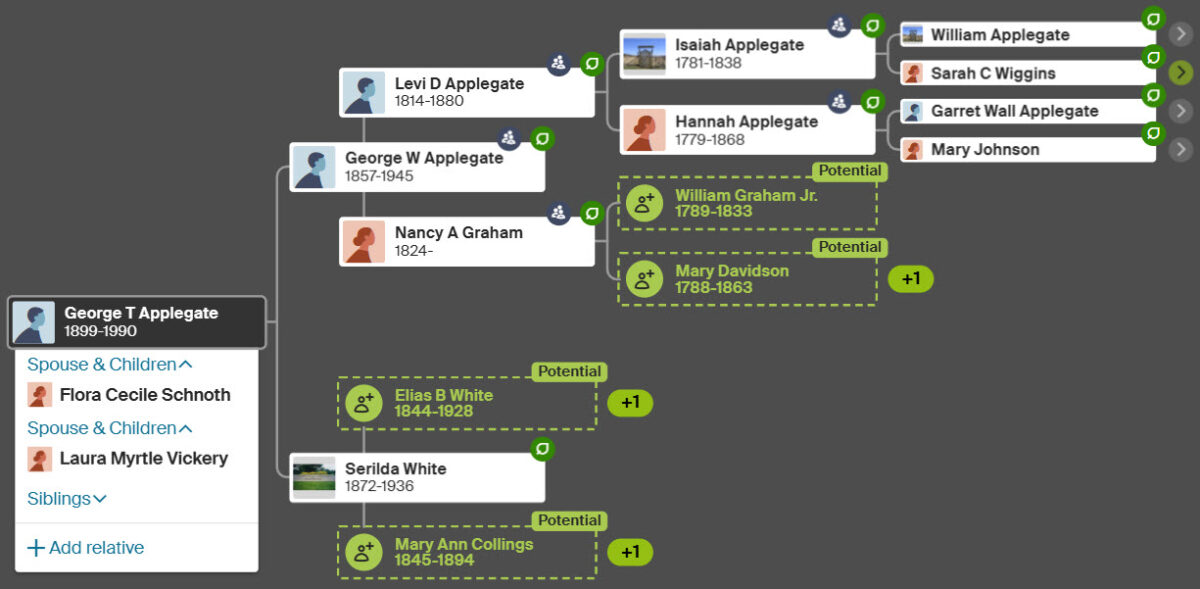
Revisited by Bones

George Thomas Applegate may not have been a man to trumpet his life story from the rooftops, but the paper trail he left tells me this: he was steady, he was adaptable, and he made the best of what came his way.
He came into the world at the tail end of the 19th century, in a household that seemed to run on equal parts family ties and sheer endurance. By ten years old, he’d already lived through his parents’ separation, adjusted to a stepfather, and kept pace with a pack of siblings. Those early years forged a kind of quiet resilience that would serve him for the next nine decades.
His work life reads like a love letter to Indiana industry — from machinist to material handler at Allison, clocking in and out for decades. He saw two world wars, survived the Depression, and never seems to have drifted far from Indianapolis. And while the census shows a man who was single, divorced, and remarried multiple times, I suspect George knew how to keep moving forward without dwelling too long on the losses.
By the time he passed in 1990, he had outlived most of his contemporaries and seen the century turn on its head. A man like that might not have left behind dramatic headlines, but he left behind something rarer — the quiet record of a life worked hard, lived honestly, and rooted deeply in one place.
George Thomas Applegate
(1899 - 1990)

